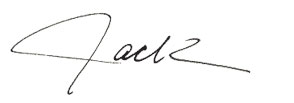What Would Happen After The Star?

Tune in for what's new in Kansas: It's a web-based news site, and regularly published journal, dedicated to limited government in the great state of Kansas. |
![]()
by Jack Cashill
Published in ingramsonline.com - July 2009
"The reports of my death have been greatly exaggerated," Missourian Mark Twain said a century ago, and exaggerated too might be the reports of the Kansas City Star's impending demise.
What is beyond rumor, however, is that the newspaper business nationwide is in only slightly better shape than the analog TV business, and largely, but not exclusively, for the same reason.
Although the economy has not helped, technology has so undermined the value of the industry that failure is a more likely outcome than survival. This being so, it might be prudent to project what a Star-less metropolis would look like.
For a moment at least, repress the schadenfreude and reflect on what The Star has meant to Kansas City. For more than a century, it has served as the town forum, the one medium that dishes up everything a well-rounded citizen has needed to know about the place he calls home—births, deaths, marriages, crimes, car crashes, charities, business, entertainment, elections, sales, sports, scandal, religion, gossip, weather—all that and Louis Diuguid, too.
As recently as 10 or so years ago, the expectation was that the informed citizen read The Star and had a handle on most of this stuff. There was, in any case, a larger shared pool of information among area residents than there is today.
As The Star has lost customers, that communal sharing has broken down. And if The Star fails, it will break down completely. That is, unless some entrepreneurial spirit does something to fill the void, and that is surely within the realm of the doable.
Although The Star today does so most comprehensively, other media routinely provide general-interest information. At least five TV stations, three radio stations, a slew of Internet sites, and a fair share of regional newspapers deliver local news on a daily basis.
For years, most of these outlets have been leaching off The Star for hard information. If The Star fails, they will have to replace that source. The clever organization among them—perhaps two or more in collaboration—will step up and become that source. The opportunity beckons. There is a certain urgency about it, as many of these news outlets are struggling as well.
The TV stations are in the best position to act. About 10 years ago, I did a regular feature on one of the town’s four commercial stations and got to see how local TV works. What struck me as strange then and stranger now is that no station here or anywhere challenges the generic, local TV mold. A given station strives to do pretty much what its competitors do but just a little bit better.
The model that local stations employ drains all seriousness out of the enterprise. Each morning, a news director sends the station’s comely young reporters out to produce a short feature on a subject about which the reporters may have known nothing at all when they woke up that morning.
If the subject is a car crash or a snowstorm, the reporters do well enough. If the subject is light rail or tax increment financing, they struggle. KMBC’s Mike Mahoney, of course, is an exception, but he has been doing the news here since the Pendergast funeral and cannot go on forever.
Knowing little in the way of background, and not wanting to screw up, the average reporter hews to the ideological line that The Star has laid down that morning. The problem here is that The Star has been at least half a bubble off plumb for more than a decade.
As a for-profit newspaper, The Star can skew the news any way its editors choose. That is their right. As the local news source, however, that skew not only undermines The Star’s historical role as town forum, but it also deforms information flow throughout the area.
The entity that replaces The Star as news source can do a better job in that role, both ideologically and technologically.
This news source would dedicate itself to gathering news in the metropolitan area. It would focus on the visual and stick strictly to facts. Its reporters would write nothing more than bullet points.
To do this well would take substantial resources, including broadcast cameras and editing bays. News has become progressively more visual. A partnership composed of two or more existing media, at least one of which would be a TV station, makes the most sense.
This news source would also contract with responsible bloggers, a phrase that is not quite as oxymoronic as it sounds. Check out KansasMeadowlark.com for instance. Some bloggers do more serious in-depth reporting than The Star does. These guys would love to get paid at least a little.
The news source site would be reserved for those media outlets that subscribe to the service. With The Star gone, these other outlets would have to pay for their news, but they would need fewer staff of their own to manage it.
They would also get a better product for their money. All the audio, video and informational data that a given news outlet—TV, radio, print, and/or Web—would need to produce a daily news report would be available on something closer to a real-time basis, and it would be delivered in a pure, unfiltered format.
As an example, imagine the difference in local reporting on the George Tiller story if this news source had been up and running two years ago. All subscribers to the news source would have had access to the following:
- The video of Paul McHugh, Chair of Psychiatry at Johns Hopkins, revealing that not one Tiller patient file he reviewed showed a sufficient medical or psychological concern to justify an abortion under Kansas law.
- The Tiller audio clip in which he concedes that 92 percent of the late-term abortions he performed were on healthy babies.
- The 2008 KDHE reports showing that, of the 192 late-term abortions on healthy babies performed in 2008—98 percent on women from out-of-state—all were for “anxiety disorders” and none was performed for a legitimate “medical emergency,” let alone to avoid the mother’s death.
- The photos taken at a private dinner chez Gov. Sebelius in 2007—while Tiller was still under criminal investigation—in which he presents Sebelius with a T-shirt reading: “Trifecta 2006: Sebelius, Parkinson, Morrison.”
- The Kansas Meadowlark money trail, which shows how Tiller invested roughly $1.2 million into 2006 election to unseat Attorney General Phill Kline and get himself invited chez Sebelius.
The subscribing news outlet could then spin the source material any way it chose, but would do so knowing that all the other area media outlets had access to the same source information. This would inevitably make for more honest reporting.
A strong case could be made for the public TV station, KCPT-TV, taking the lead as the way of fulfilling its mission and paying its bills. KCPT could also be a client of its own news source. No other news outlet is better positioned to serve as town forum.
As a motto, the station might embrace the wise words of the late Democratic senator, Daniel Patrick Moynihan: “You are entitled to your own opinions, but you are not entitled to your own facts.”


